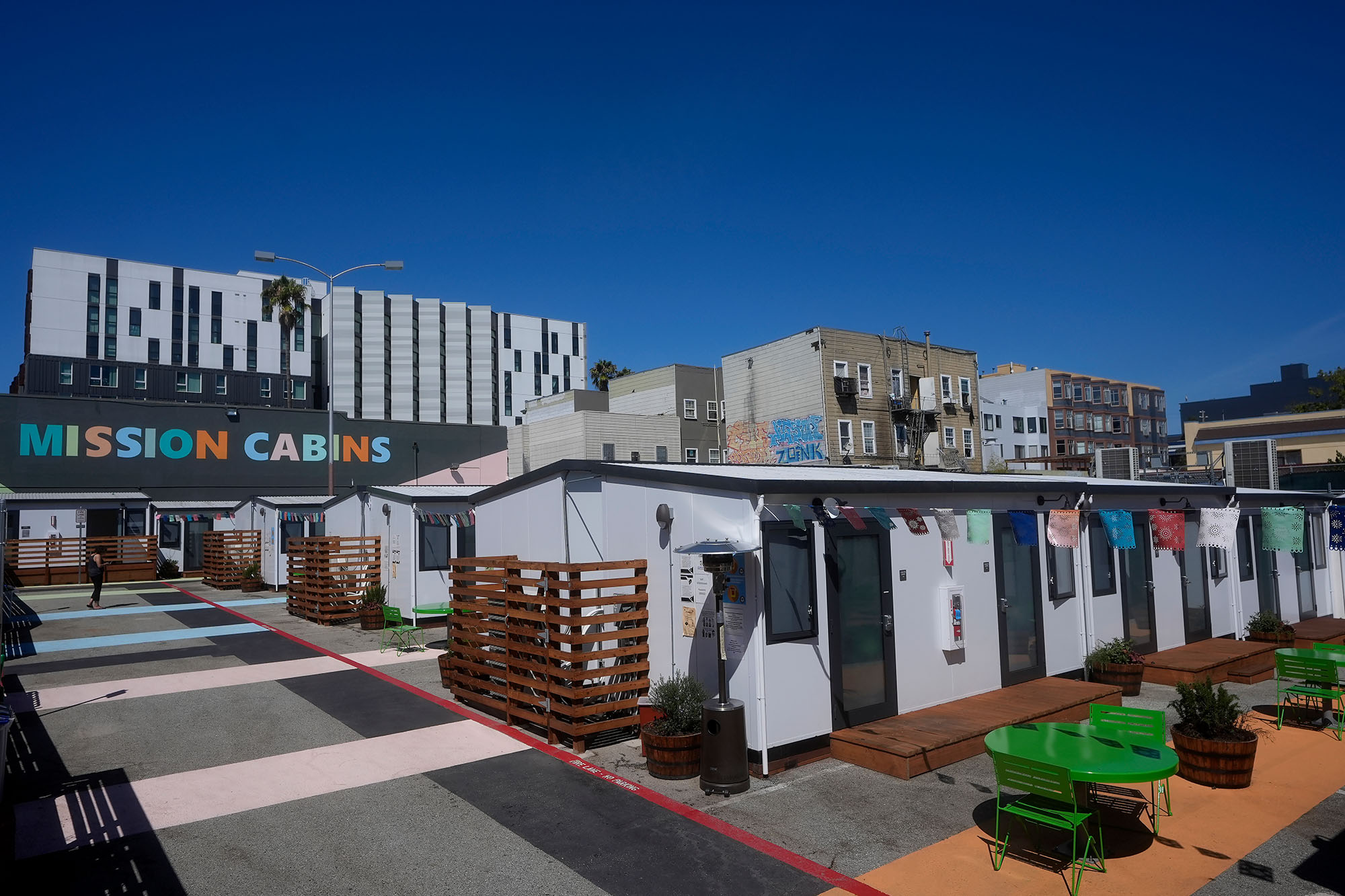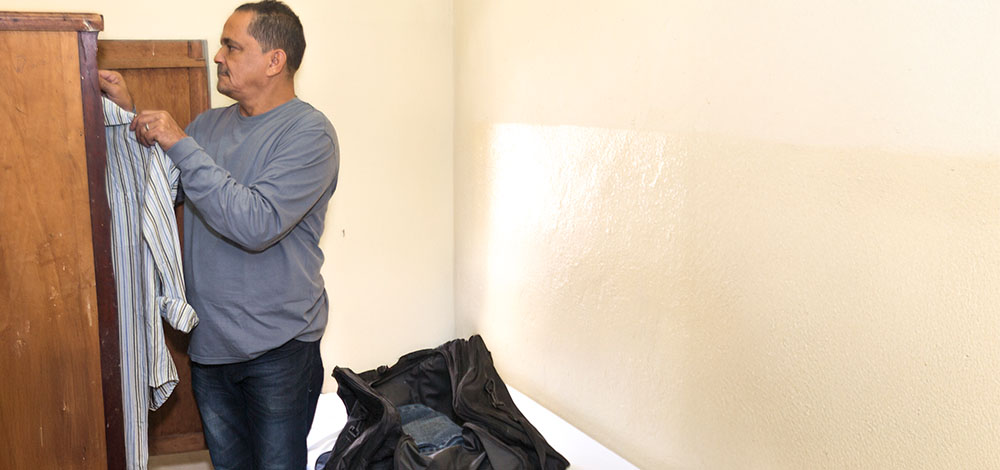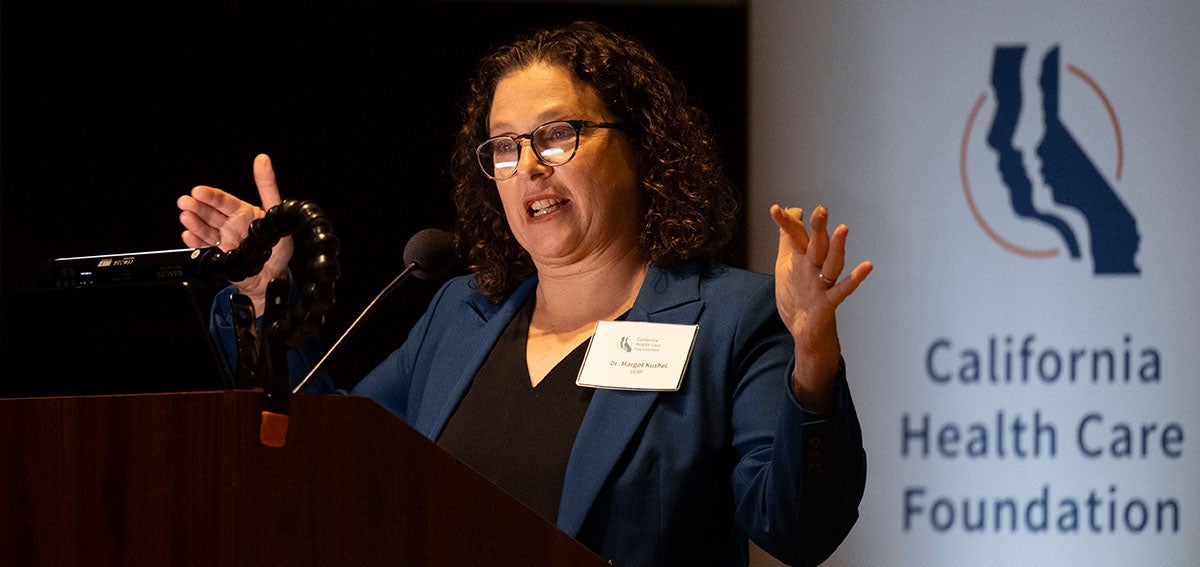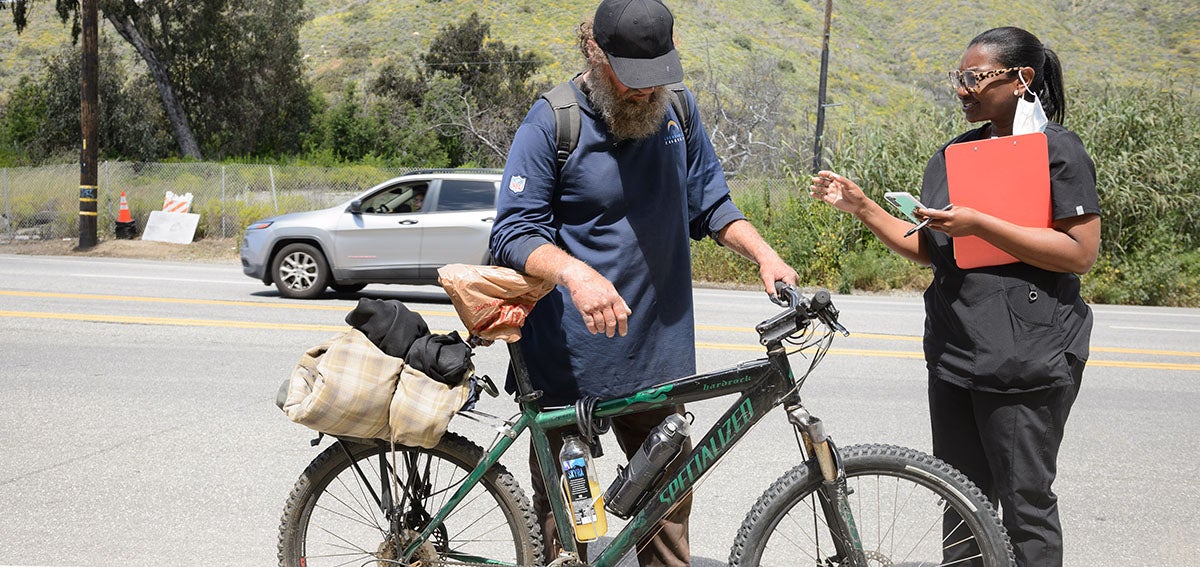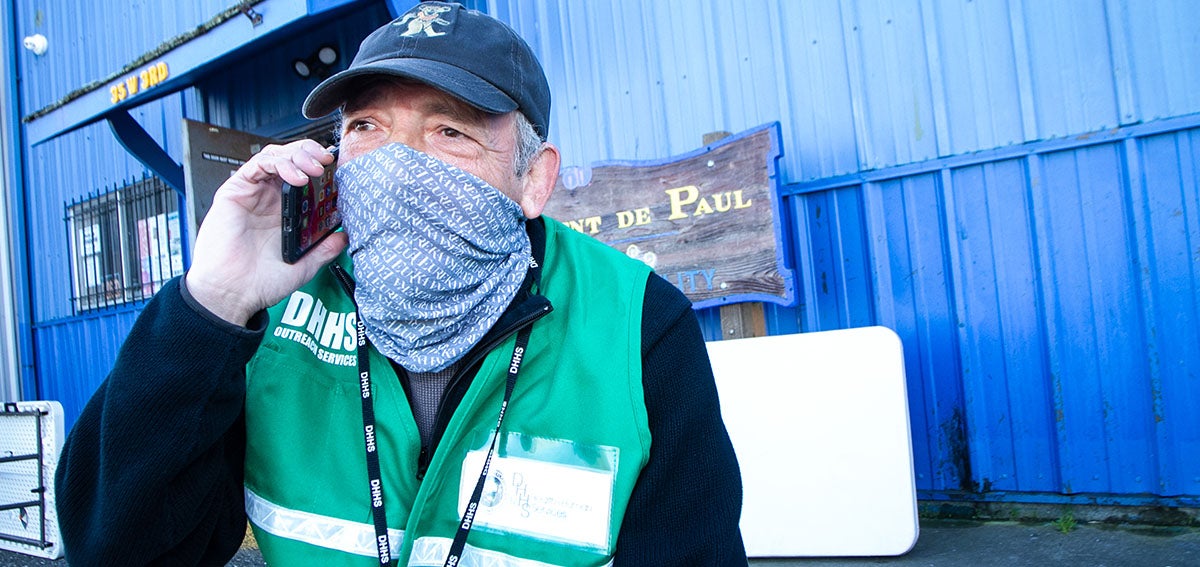
Jaclyn Culleton knows just how frustrating it can be to try to help people experiencing chronic homelessness and suffering from mental health problems. As manager of a mobile outreach program for Humboldt County — 3,500 square miles of rugged mountains, redwood forests, and spectacular coastline in Northern California — Culleton and other members of the team spent years trying to keep track of unhoused clients in the county seat, Eureka, and in remote communities and camps. Clients routinely lost documents necessary to obtain services, periodically lost touch because they’d been jailed or admitted to the hospital, missed important medical and social service appointments, and got evicted from housing that took months or even years to secure, she said.
A big problem in coordinating services for clients was that county social workers, case managers, mental health support staff, housing coordinators, and others were not always aware of what the others were doing for shared clients. Staff turned over. People were accidentally dropped from email chains. There was no easy way to find out if a client had been arrested or hospitalized.
That changed in 2016 when the North Coast Health Improvement and Information Network (NCHIIN), Humboldt’s nonprofit health information exchange, approached Culleton about collaborating on an electronic records system for the homeless population. Culleton knew exactly what she wanted. “I said, ‘I have a dream. I have this vision,’” said Culleton. “I call it ‘Facebook for clients.’”
Since the project was launched in 2016, psychiatric hospitalizations dropped 60%, and emergency department admissions are down by one-third.
Five years later, her vision for a one-stop information portal for county agencies working with chronically homeless clients has become a powerful tool for combating homelessness in this remote county of 136,000 residents. It is one of several collaborative efforts to help local people experiencing chronic homelessness by drawing together resources from the county, hospitals, the Medi-Cal managed care network, community clinics, and the health information exchange. These efforts include a medical respite program for clients who are experiencing homelessness and who need a place to recover after being discharged from the hospital, and several permanent supportive housing projects.
Since the care coordination platform was launched in 2016, psychiatric hospitalizations among clients who are unhoused, staying in shelters, or living in permanent supportive housing are down 60%, said Culleton. Emergency department admissions have dropped by one-third. She attributes the declines to improvements in care facilitated by the platform.
“There are a lot of challenges in rural communities, but one of the benefits is this idea of one degree of separation,” said Martha Shanahan, director of community benefits for Eureka’s main inpatient facility, Providence St. Joseph Hospital. “We’re small enough that you get to know people. It does, I think, breed this willingness to work together. . . . Having trusted relationships across organizations is so important, and it really benefits the patient and the clients we’re working for.”
An Inspired Idea
Culleton’s inspired idea is an interactive platform that allows county social workers and case managers to coordinate care for people who lack housing and have mental illness. Each client has a profile on the platform, but instead of “friends,” it displays members of the person’s care team. Instead of photos, it contains documents such as Section 8 housing applications, a copy of the client’s birth certificate, or signed consent forms. The news feed is a message board where team members can post updates about the client and coordinate the client’s care.
About 60 county staff members have access to the platform, which is viewable on a computer or phone — an especially practical feature for Culleton’s mobile outreach team. The database contains approximately 1,000 clients who have consented to their data being shared. It is linked to the electronic health information exchange system used by area hospitals and clinics to access information about patients’ health and medications. And it collects basic data on clients who interact with county mental health facilities, probation officers, and the county jail.
Social service providers can’t view all of a client’s health information because of federal and state privacy restrictions, especially those related to mental health. For example, a client’s mental health diagnoses or medications are visible only to health clinicians. But social service providers do get an alert when a client visits an emergency room, is admitted to a hospital or a county psychiatric facility, or is booked into or released from the county jail. Team members are notified when their client has a medical or mental health appointment at a community clinic or needs to attend a medication checkup. They can see if a client has been assigned to a probation officer.
“Having trusted relationships across organizations is so important, and it really benefits the patient and the clients we’re working for.”
—Martha Shanahan, Providence, St. Joseph Hospital
The platform gives case managers and others working with the client easy access to information and updates that in the past would have required a phone call or email to another agency or a search for the client’s physical documents. Jail time or a hospitalization might not have come to county workers’ attention at all. The alerts provide critical, real-time information that allow staff to respond promptly to a client’s needs, including arranging transportation for appointments, checking on them in the emergency room or jail, ensuring that a newly housed client’s rent or electric bill gets paid, and guarding against them losing benefits because of a prolonged hospital stay or lengthy jail time. The news feed and stored documents make it easier to track, coordinate, and check off tasks in the prolonged process of getting and keeping a client housed.
“It’s amazing,” said Culleton. “Now the efficiency and the lack of redundancy is really able to help people move into housing quicker.”
Privacy Rules: Not an Insurmountable Barrier
Creating a system like this isn’t simple. Privacy laws such as the Health Insurance Portability and Accountability Act (HIPAA) delineate what type of health information can be shared and who may have access to it. County agencies and health providers need to be comfortable sharing this information, and clients have to give their consent.
Integrating data from different entities with their own data management systems was a technological feat, which is why it took several years to build the network. Leaders of the health information exchange adapted a commercial platform called Activate Care, gradually incorporating all the different data systems and working with a consultant and the county to ensure it complied with privacy rules. They also figured out how to incorporate information from the county’s mental health program so that clinicians in hospitals and community clinics are notified if a patient is a county client. Information about diagnoses and medications is not accessible to social service workers.
“With each success of new data going in, that built trust and underscored engagement and participation in the platform,” said Jessica Osborne-Stafsnes, the NCHIIN grants and program development director. “We started to eat the elephant with small bites.”
Still on the agenda are plans to remove remaining barriers to information exchange. For example, social service providers with nonprofit organizations that work with the people experiencing homelessness but are not affiliated with Humboldt County do not have access to the platform. Social service workers affiliated with Providence St. Joseph’s Hospital are using an in-house version of the system but have yet to share information with county social workers. Information on substance use and treatment isn’t yet widely available on the exchange.
Nancy Starck, legislative and policy manager for the county Health and Human Services Department, hopes the platform eventually incorporates all organizations working on a broad array of local services in Humboldt, similar to San Diego’s Community Information Exchange. She would like to see the use of the exchange expanded to help support struggling families.
Sharing information isn’t the only way Humboldt social service and health providers collaborate to help people experiencing homelessness. Providence St. Joseph Hospital is a partner with the county in the operation of five community resource centers that provide information and connections for people in need. Some host services, such as a regular mobile health clinic operated by Open Door, a Federally Qualified Health Center.
A Medical Respite Care Program in Humboldt
Providence St. Joseph Hospital, which also runs Providence Redwood Memorial Hospital in nearby Fortuna, contracts with a nonprofit Eureka shelter to run a medical respite program with 15 beds for patients without housing who are discharged from the hospital and need a place to recuperate. Most of the beds are located within the shelter building, although three are at a sober living house, and one at a motel. The hospital funds the program, and the local Betty Kwan Chinn Homeless Foundation provides the shelter space. Partnership HealthPlan of California (PHC), a Medi-Cal managed care plan serving 14 northern counties, including Humboldt, also provided funding to help expand the facility in 2017.
“We provide a bridge. We allow individuals to rest and do their medical follow-up,” said Joy Victorine, who manages the respite program for St. Joseph. “Then we connect them to one of our community partners that does that longer-term piece of working with them for 6 or 12 months to find housing.”
The hospital, county, and PHC have collaborated on permanent supportive housing projects for people who are homeless. In 2018, the hospital and health plan joined forces to turn an abandoned building into 10 housing units for unhoused families with children. St. Joseph Health and its parent organization, Providence, have secured $11.5 million in state grants and will use the hospital’s community benefit funds to convert a motel into 48 studio apartments for people experiencing chronic homelessness along with complex health conditions. Work is scheduled to begin soon. Both the county and the hospital will provide supportive services to the clients living there, said Shanahan. Community benefit funds are resources hospitals set aside to help their communities in order to fulfill their mission and their nonprofit obligations to the state.
PHC contributed more than $1 million to a 26-unit permanent supportive housing project with the county and a local developer that opened in Rio Dell in 2020.
Solving homelessness “has to be a solution that happens in the community, outside the walls of the hospital,” said Shanahan. “It’s foundational to health and creating a healthy community, and we’re committed to not just providing health care inside the hospital but creating community-level health as well.”
You can learn more about the challenges and opportunities of coordinating data exchange for people experiencing homelessness through the new CHCF report, Breaking Down Silos: How to Share Data to Improve the Health of People Experiencing Homelessness. In addition, this resource provides information for health care providers about how homeless assistance works at the local level.
Authors & Contributors

Claudia Boyd-Barrett
Claudia Boyd-Barrett is a longtime journalist based in Southern California. She writes regularly about health and social inequities. Her stories have appeared in the Los Angeles Times, San Francisco Chronicle, San Diego Union-Tribune, and California Health Report, among others.
Boyd-Barrett is a two-time USC Annenberg Center for Health Journalism fellow and a former Inter American Press Association fellow.

